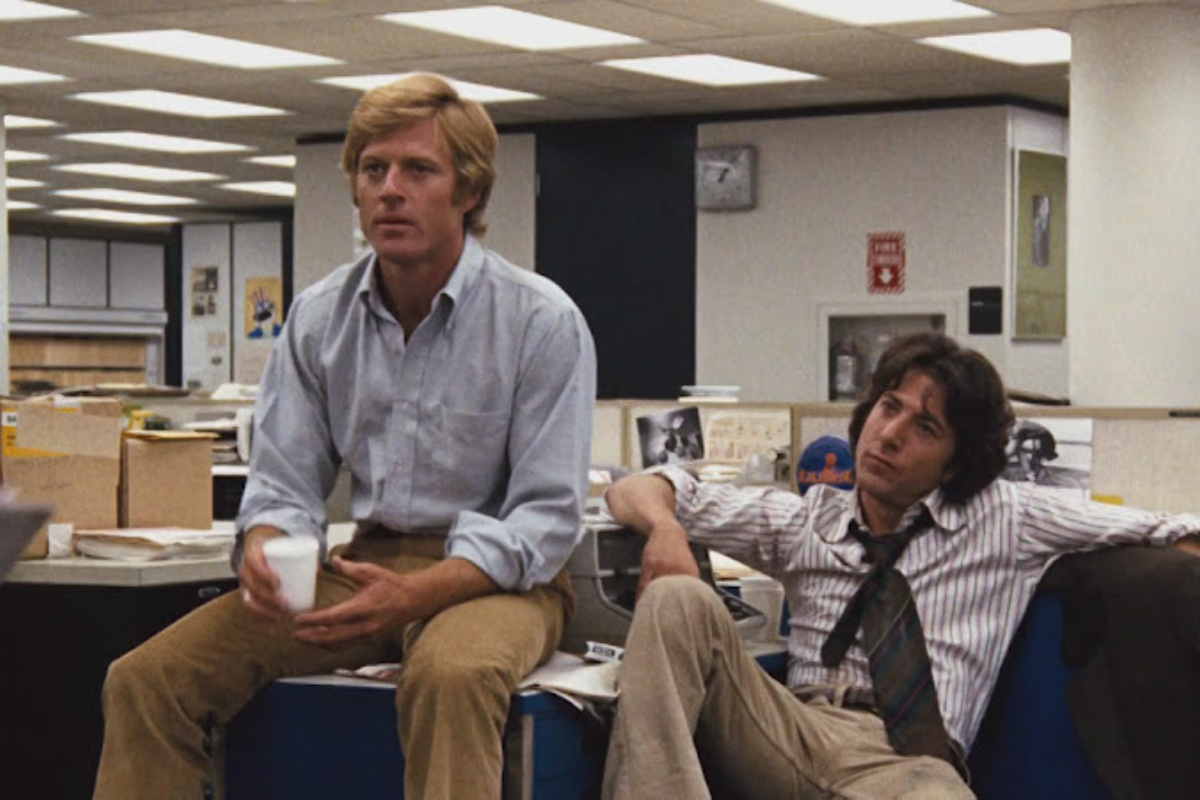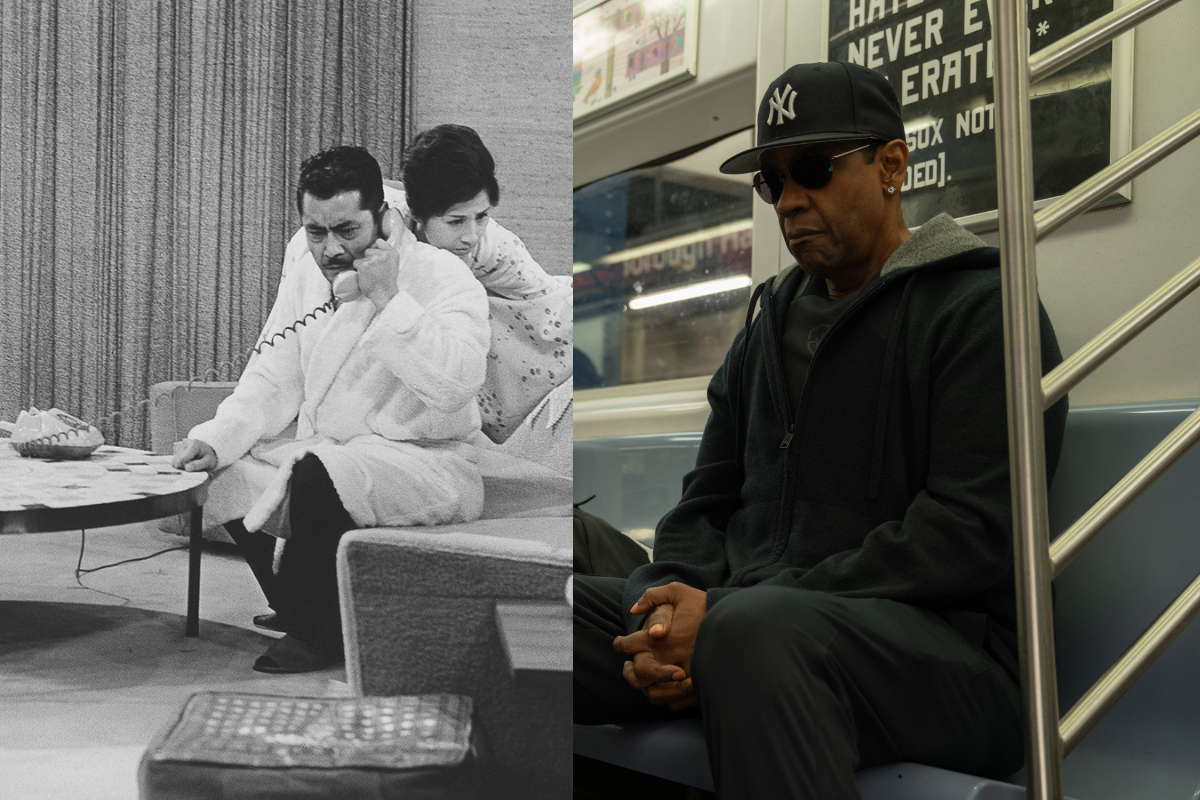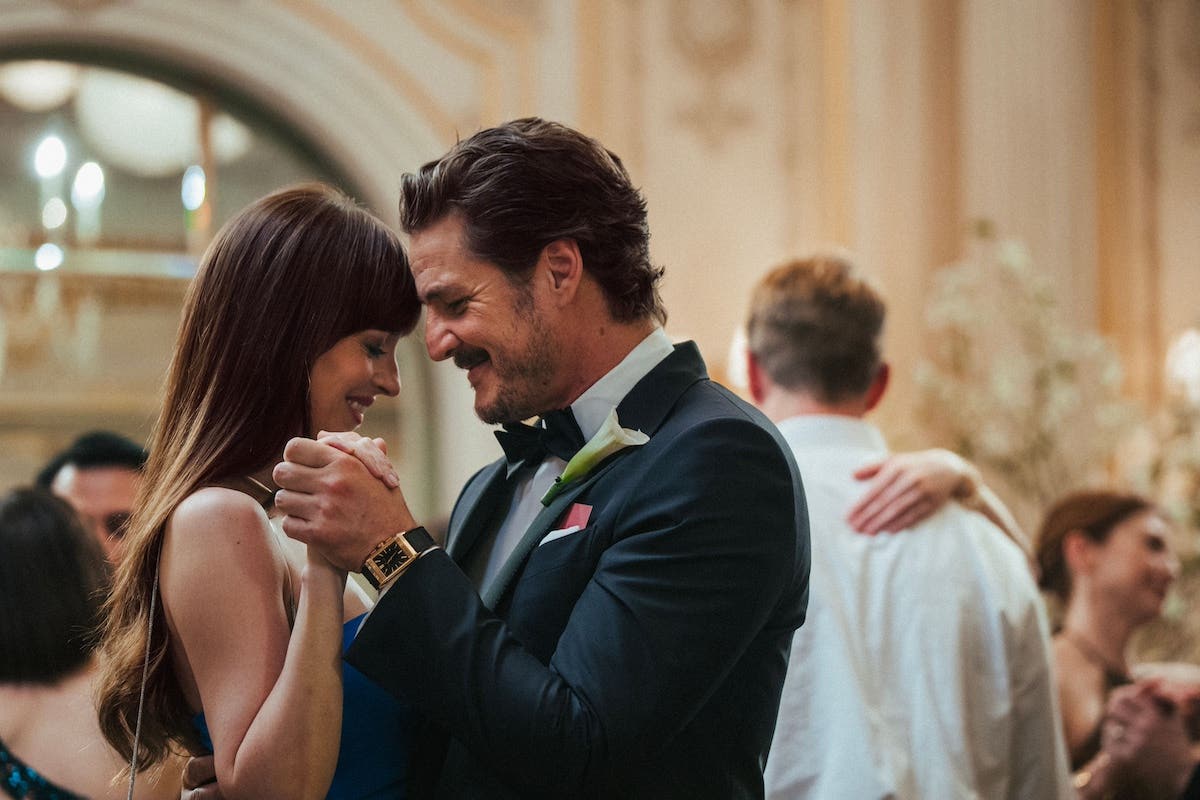UNDERSTANDING SCREENWRITING: The Debris of Summer
Well, here’s what’s left:’ Twisters,’ ‘Fly Me to the Moon,’ ‘Touch,’ and two plays about movies, ‘Broken Blossoms’ and ‘Crevasse’.
Let’s Twist Again Like We Did in the Summer of ’96.
Twisters (2024. Screenplay by Mark L. Smith, story by Joseph Kosinski, based on characters created by Michael Crichton & Anne-Marie Martin. 122 minutes)
To get this out of the way first, Crichton and Martin had nothing to do with this film, and none of the characters in this film bear more than a general similarity to any of those in the first Twister (1996), which Crichton and his then-wife Martin wrote. See the advantage of a good agent and a sharp lawyer?
The Crichton/Martin screenplay was not bad. One of the normal limitations of Crichton’s work was he was more interested in technology than character, so I suspect the liveliness of the characters in their film comes from Martin and some terrific casting.
The new film starts with a young Kate and her team caught in a large tornado while she is testing out her theories. Several of her team is killed, and she gets a desk job in New York. Several years later Javi, one of the survivors of the disaster, comes to see her and talks her into joining his team for a week. Oh, yeah, he is still in love with her, although neither Javi or the actor who plays him (Anthony Ramos) is up to the standard Other Guy Who Loses the Girl established by the great Ralph Bellamy in the thirties. I kept expecting Javi to get killed in a tornado to get him out of the way, but, spoiler alert, he survives to the end.
Out in Oklahoma, Kate and Javi and his team meet up with Tyler, who is a flashy tornado chaser who videos his chases and sells T-shirts with his name and picture on them.
Tyler is played by Glen Powell, who is having a great year, between this film and Hit Man, which he both co-wrote and starred in. He brings all his charisma and acting skills to play here. I am not sure why Daisy Edgar-Jones, who plays he adult Kate, gets top billing over him. It might be because the movie is Kate’s story. Edgar-Jones is great in her close-ups, but not so good in her two-shots with Powell.
By movie logic, we know she is going to wind up with Tyler-Powell-Cary Grant rather Javi-Ramos-Ralph Bellamy. She does not at the end, which is a surprise for all concerned. They did shoot a version of their final scene in which Kate and Tyler kiss, but it got dropped.
OK, which version of why it got dropped do you want to believe? Powell has said that they got a note from executive producer Steven Spielberg suggesting they drop the kiss. Other sources say the director Lee Isaac Chung decided to drop it on his own. You see why us film historians have problems finding the truths behind filmmaking?
One of the delights of the original Twister was the gang of helpers, which featured up-and-coming actors like Philip Seymour Hoffman, Alan Ruck, Todd Field, and Jeremy Davies, as well as a solid cameo by the great Lois Smith.
In Twisters, the gonzo tornado chasers belong to Tyler and we do not see as much of them as we like until way late in the movie.
One of the breakthroughs of the first movie was that the special effects crew could put in effects that moved within a scene. The first time I saw Twister I was amazed when I first thought that they had been able to capture a real tornado that close up. Then I realized that they were now able to put the special effect of the tornado into a live-action shot of the trucks and the roads. By the end of the film, I had gotten used to that. When I saw the film a second time I was used to what the effects people could do and it did not dazzle me as much.
The first hour of Twisters is nearly all special effects as Kate and her crew try to out-chase Tyler and his crew. The special effects are dazzling, but they are very repetitive.
The second half of the film deals more with Tyler and Kate and her civilizing effect on him. It is OK, but the chemistry between Powell and Edgar-Jones is not up to the level of that of Powell and Adria Arjona in Hit Man.
The big finish is the destruction of a small town, although we have seen a lot of that before in the film. The set piece is the tornado tearing up a movie theatre. I think the filmmakers wanted this to have some kind of mythical significance, but it just does not. Or maybe we are just too tired to understand it.
Another small point. One of the stars of the first film was Helen Hunt. There is a sequence in the new film where Kate and Tyler visit Kate’s mother, played by the always welcomed Maura Tierney. I like Tierney a lot and she is good in the part, but why couldn’t they get Hunt? Did they not ask? Did she want too much money? Some film historian other than me will figure that out.
The Fall Guy, Part II.
Fly Me to the Moon (2024. Screenplay by Rose Gilroy, story by Keenan Flynn & Bill Kirstein. 132 minutes)
For those of you with very short memories, you might want to remind yourself what I wrote about The Fall Guy here three months ago.
Fly Me has almost exactly the same problem as The Fall Guy, only worse. Both films start out as rom-coms. Here we are at NASA’s playground in Florida in 1968-9. They are preparing for the flight of Apollo 11, the first manned flight to the moon. Cole Davis (no, the hero in Fall Guy was not Cole, but Colt) is the project manager for the flight. Moe, a mysterious guy with what he implies are connections to Nixon’s White House, hires hot-shot advertising genius Kelly Jones to help promote NASA and the flight, since certain congressmen do not want to finance the flight.
So Kelly goes down to Florida and starts advertising campaigns for products connected with the astronauts, like Tang. She definitely gets in the way of Cole. Opposites sort of attract.
Then an hour into the picture it turns into a thriller in the vein of Capricorn One, a 1977 action conspiracy movie. In One a planned mission to Mars is scrubbed because it's too dangerous, but the authorities plan a staged imitation to keep the money flowing. In Fly Me Moe forces Kelly to create a staged moon landing, in this case, the real one is a disaster. This plot turn takes us out of the rom-com genre, just as Colt’s attempt in Fall Guy to find the star he has been doubling for does in that film.
Some of the staged moon landing scenes are convincing, but that is not the movie we were watching and semi-involved in. In Fall Guy we were very involved in the romance, not only because the writing was better, but because the chemistry between Ryan Gosling and Emily Blunt was much better. Kelly is played by Scarlett Johansson and she is at the top of her bright funny form. You would like to see the movie she thought she was in (she was a co-producer, by the way).
Channing Tatum is Cole, but he is playing it as though he thought the movie was the serious conspiracy film the second half of the film becomes. The problem may be the writing, but I think it may be as much the fault of Tatum and the director, Greg Berlanti, who did not keep him on the same page as Johansson. A couple of directorial nudges could have made a lot of difference.
I cannot really recommend Fly Me to the Moon, but if you are a ScarJo fan you will love her performance. And you will get a lot of lovely views of the NASA home base. That was not quite enough for me.
This has all happened to us…
Touch (2024. Screenplay by Ólafur Jóhann Ólafsson, Baltasar Kormákur, based on the novel by Ólafur Jóhann Ólafsson. 121 minutes)
…or if it hasn’t happened to you yet, it will. You had a romance with someone a long time ago, but you have lost track of them. So you try to track them down. You may remember that there was a brilliant film on the same subject I reviewed last year, Past Lives (2022). You can read my review of it here.
Touch is not up to that one. Here we have Kristófer, an Icelandic man in his seventies, who is having some general medical problems. He decides to shut down his restaurant in Iceland to try to find Miko, a Japanese woman he fell in love with fifty years before. So naturally he flies to London.
Well, yes, it was in London that he met her. He was studying at a university, but dropped out and ended up with a job as a dishwasher at a Japanese restaurant in London. So we begin to get flashbacks of the young Kristófer. He is played by the handsome Palmi Kormákur, who appears to be the son of Baltasar Kormákur, who not only co-wrote the film, but directed it; IMDb is not very clear on any family relationship. In any case, we believe him more as the romantic lead than we do the other guy in Twisters.
The film cuts back and forth between the elderly Kristófer searching his old haunts in London and the younger Kristófer falling in love with Miko, the daughter of the owner of the restaurant. OK, but awfully slow going, both in the past and the present (well, the early 2020s). Forty minutes in we think he has found Miko, but it is only another woman who worked in the restaurant. She at least has a letter (only one) from Miko, but it tells Kristófer Miko has moved back to Japan.
So Kristófer flies off to Japan. He lands in Tokyo and we get a long, useless scene of him having drinks in a bar with somebody we have not seen before and never see again.
The novel this movie was based on was a big best seller in Iceland. It came out in an English translation in 2023. I suspect it works better as a novel, since Ólafsson can get inside the characters’ heads in a way you cannot on film. What the makers of Past Lives did was find out ways in what the former lovers write in emails and say in dialogue that shows us the kinds of emotions they are feeling. The dialogue in Touch simply does not do that; it is very flat and literal.
This is especially true in the final twenty minutes of the film when Kristófer finally finds Miko. They talk, just like old friends rather than lovers who have not seen each other in fifty years. I suspect the dialogue in these scenes works better in the novel, but in the film, the dialogue does not give the actors enough to do or to let them show a variety of emotions the situations would seem to call for.
Again, look at Past Lives to see how it ought to be done.
Movies in live theatres.
It may not surprise you to learn that from time to time, there are original stage plays about movies that open in Los Angeles. Sometimes playwrights just cannot keep their hands off interesting subjects of film history. This summer we saw two such plays, neither one of them perfect, but not without interest.
First up was Unbroken Blossoms at the East West Players, the great theatre that for almost sixty years has done interesting theatre by, about, and with Asia-American writers, directors, and performers. As I have told people, I have never seen an uninteresting play there. I have seen ones that did for work, but never an uninteresting one.
Unbroken Blossoms by Philip W. Chung is about the making of D.W. Griffith’s 1919 film Broken Blossoms, which he made after The Birth of a Nation (1915) and Intolerance (1916) and before, well, some of his lesser ones. The story is of a waif in London’s Limehouse District who is brutally beaten by her father but is befriended by a young Chinese man. The waif, as often with Griffith, is played by Lillian Gish, and the Chinese man is played by Richard Barthelmess.
Uh, wait a minute. Barthelmess, who was a big star in the Twenties, was definitely not Chinese. Well, in those days, it was traditional for white actors to play persons of color. In this case, it was called yellowface.
But Chung discovered that Griffith had hired two Chinese men as experts to deal with the Asian elements in the film. The play is primarily about them, and the scenes of the two of them discussing what is going on are the most interesting in the show.
The problem I had with the play was the portrayals of the white characters. Chung has pretty much caught Griffith, but his Lillian Gish comes across as a 1920s flapper, which was not Gish at all. If you see her movies you can see why Griffith kept casting her as a waif.
Even worse is the portrayal of Barthelmess as a flaming queen. I have no idea about his personal life, but onscreen he was the strong, silent, and sensitive type.
I suspect what Chung was trying to do was to satirize the white folks the way Asians had been satirized on the stage and screen. He gets his laughs, but at the cost of believability.
The other play is Crevasse, written by Tom Jacobson, at the Victory Theatre in Burbank. In 1938 the German director Leni Riefenstahl came to Hollywood to try to get an American distribution for her epic documentary of the 1936 Berlin Olympic Game, Olympia. Because she had previously made the notorious Nazi documentary Triumph of the Will (1935), nobody in the business would talk to her.
Except one.
Walt Disney. So Jacobson has imagined what happened in the meeting between Walt and Leni. He has nailed Walt perfectly: the combination of boyish enthusiasm, wild inventiveness, and hard-edged shrewdness.
Unfortunately, he has missed the mark on Leni. She was much more a rigid authoritarian than he paints her, although bits of that seep out from time to time. Mostly on stage, she is charming and flirtatious, as she could be.
If Jacobson goes back to his computer, I think he should pull Leni back a bit. The trick would be to make her more accurate without decreasing the entertainment value of the play. He may end up with a better play, but one that is not as much fun as the one he has now.
But, hey, we all know that rewriting is not easy, don’t we?
Tom Stempel is a Professor Emeritus at Los Angeles City College, where he taught film history and screenwriting from 1971 to 2011. He has written six books on film, five of them about screen and television writing. You can learn more about his books here. His 2008 book Understanding Screenwriting: Learning from Good, Not-Quite-So- Good, and Bad Screenplays evolved into this column. The column first appeared in 2008 at the blog The House Next Door, then at Slant, and then Creative Screenwriting before it found its forever home at Script.
In the column he reviews movies and television from the standpoint of screenwriting. He looks at new movies, old movies, and television movies and shows, as well as writing occasional other items, such as appreciations of screenwriters who have passed away, plays based on films, books on screenwriting and screenwriters, and other sundries.
In September 2023 Tom Stempel was awarded the inaugural Lifetime Achievement in the Service of Screenwriting Research by the international organization the Screenwriting Research Network.







